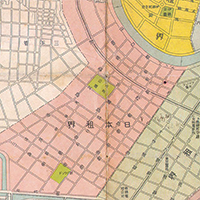L’État de Meiji et le tsunami du Sanriku de 1896 - Partie 4/4
2025-07-31 | William Favre
Dans cette quatrième et dernière partie, nous concluons par l’analyse du rapport entre l’Etat central et les acteurs non-étatiques comme la presse et la société civile locale. Enfin, nous regarderons comment l’Etat influence la résilience des communautés locales.

L’État de Meiji et le tsunami du Sanriku de 1896 - Partie 3/4
2025-07-31 | William Favre
Dans cette troisième partie, nous allons voir comment les départements (Iwate, Miyagi et Aomori) sont au coeur de l’effort de reconstruction immédiate après la catastrophe. Dans un second temps, la Croix-Rouge japonaise intervient sur son principal terrain d’intervention en temps de paix.
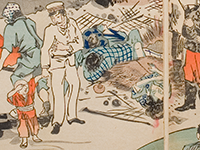
L’État de Meiji et le tsunami du Sanriku de 1896 - Partie 2/4
2025-07-31 | William Favre
Dans cette seconde partie, nous abordons l’intervention de l’Etat central de Meiji dans le cadre de l’urgence représentée par une catastrophe se passant dans une région périphérique. Regardons quels sont les outils mis en oeuvre pour répondre au défi posé par le tsunami.
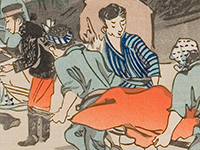
L’État de Meiji et le tsunami du Sanriku de 1896 - Partie 1/4
2025-07-31 | William Favre
Dans ce mémoire, divisé en quatre parties, nous nous concentrons sur le tsunami du Sanriku de 1896, la même région ayant été touchée par la Triple Catastrophe de 2011. Au travers de différents acteurs, nous allons analyser comment l'après-catastrophe a influencé sur le long terme les populations locales, plus que le raz-de-marée lui-même.
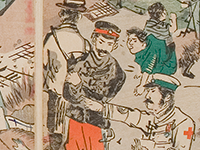
Shibusawa Motoji and the Great Kantō Earthquake of 1923
2025-02-10 | William Favre
How energy consumption patterns impact the capacity of societies to cope with disasters
This article seeks for the hundred-and-secund anniversary of the Great Kantō Earthquake of the 1st of September 1923 to look at a rarely explored angle in the field of disaster history, namely the history of energy and technology. We will focus on the report of Shibusawa Motoji (1876-1975), the nephew of Shibusawa Eiichi (1840-1931), on electrical systems to see what such a text could tell us about the link between energy and disasters.
This article seeks for the hundred-and-secund anniversary of the Great Kantō Earthquake of the 1st of September 1923 to look at a rarely explored angle in the field of disaster history, namely the history of energy and technology. We will focus on the report of Shibusawa Motoji (1876-1975), the nephew of Shibusawa Eiichi (1840-1931), on electrical systems to see what such a text could tell us about the link between energy and disasters.

Karafuto, Part 3: An Environmental History of the Japanese Colonization of Sakhalin
2024-10-01 | William Favre
In this last part, we will resume and finish our historical research on the past of Japanese Sakhalin/Karafuto with the militarization of the Japanese regime. Starting with the invasion of Manchuria and ending with the end of the Japanese control of South Sakhalin, this period had a lasting impact on the ecosystem of the island.

Karafuto, Part 2: An Environmental History of the Japanese Colonization of Sakhalin
2024-10-01 | William Favre
In this second part, we pursue our investigation on the environmental history of the Japanese colony of Karafuto/ Sakhalin. During the Interwar period, the main events were the invasion of North Sakhalin after the fall of the Tsarist Empire and the continuation of leases in North Sakhalin oil fields under Japanese leadership.
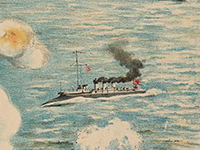
Karafuto, Part 1: An Environmental History of the Japanese Colonization of Sakhalin
2024-10-01 | William Favre
This article aims to understand and analyze a glimpse of the island’s history from the point of view of environmental history. The paper shows the role played by infrastructures in the colonization of Karafuto (Southern Sakhalin below the 50th parallel) affected the environment and back. Furthermore, I situate the history of the settlement between 1905 and 1945 in a broader context of the Japanese Empire, which was officially established from 1895
to 1945, but the chronological fork could be widened. We will focus on the development of infrastructure as tools allowing the Japanese to tame the island and to concretize its colonial project.

The arrival of Apis mellifera to Japan, part 2
2024-01-08 | William Favre
This article is the second part of a series of articles about the environmental history of beekeeping, notably in Japan and other connected areas of the globe. The first part of this series focused on the creation and the dispersion of a new model of beekeeping - the one we know nowadays, based on a more systematic fashion. The second and final part will focus on the encounter between the Western model and the Japanese one, where two species meet as well: Apis mellifera and Apis cerana. The period of interest will the beginning of the Meiji period to World War II. In a later section, we’ll consider the nefarious part of the worldwide exchange network that allowed such encounters - the arrival of invasive hornet species from East Asia.

Apis mellifera in history, part 1
2023-05-01 | William Favre
In this article, the first part of a double chapter story explores how beekeeping, as a craft to keep bees and to produce different products (honey, wax), became gained in scientificity throughout the Modern Ages and evolved until the form we know today. We will also discover that this history is international and connected between different social milieu spanning on both sides of the Atlantic ocean.

Le rôle des Wakō dans les réseaux maritimes du XVIe et XVIIe siècles
2023-01-06 | William Favre
Cet article se propose d'étudier comment les Wako ou autrement dit, les pirates japonais, ont influencé le cours des réseaux d'échanges est-asiatiques au cours du XVIe siècle. Sous un angle différent, l'essai dévoile la contribution des pirates Wakō à l'arrivée des Espagnols et Portugais sur l'archipel japonais. Enfin, la fin et la postérité des Wakō sont étudiées dans la dernière partie.
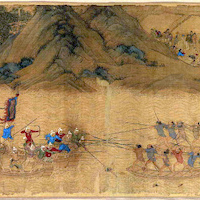
Of humans and great predators, the case of Switzerland
2022-10-28 | William Favre
This essay investigates the extermination of great predators (bears, wolfs, lynx and bearded vultures) during the early modern and modern periods, and their eventual resurgence at the end of the 20th century and the first decades of the 21st century. The mechanics and the reasons of their extermination and the conditions of their return will be uncovered.

La Corée coloniale: un nationalisme géopolitique
2022-10-03 | William Favre
Dans ce court article, nous allons découvrir les débuts du nationalisme coréen et comment son essor a été fortement influencé par la situation géopolitique de la péninsule au cours de la seconde moitié du XIXe siècle. En outre, les mouvements d'indépendance en Corée étaient fortement liés à la formation de l'identité nationale coréenne, construite en réaction aux incursions étrangères.
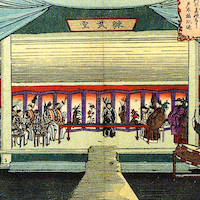
La crémation comparée entre le Japon et la Birmanie
2020-10-05 | William Favre
Anthropologie comparée des rites collectifs de crémation au Japon et en Birmanie
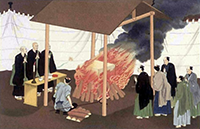
Why does Swiss history matter to global history?
2021-10-07 | William Favre
When one thinks of global history, Switzerland isn’t often the first country that comes to mind. The countries usually evoked are mainly located in historical main trade routes such as India, Indonesia or France. We can easily think of the Silk Road, both terrestrial or maritime or later routes that were opened with the violent integration of the Americas into the global trade routes. Moreover, most of them were military and political powers controlling a portion of these and basing their might on mainly technological and military tools.
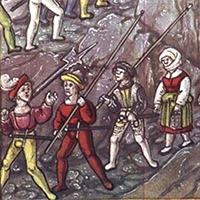
L'étude des tsunamis
2020-04-02 | William Favre
Dans le compte-rendu suivant, l'ouvrage collectif dirigé par le chercheur néo-zélandais Roy Starrs est décortiqué. Nous allons voir comment la thématiques des tsunamis a été traités dans cet opus.
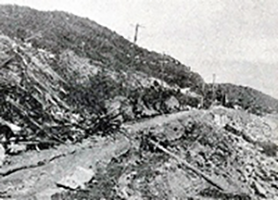
Histoire des techniques japonaises selon Tessa Morris-Suzuki
2021-05-26 | William Favre
Dans le compte-rendu suivant, nous allons traiter le livre de Tessa Morris-Suzuki mentionné ci-dessus. L’ouvrage retrace la manière dont la technologie et les techniques ont interagi avec la société japonaise durant près de quatre siècles, de l’époque Edo (1600-1868) à nos jours.

Contre-rendu d'article sur les études chinoises au Japon
2019-11-25 | William Favre
Avant de traiter l’article, il paraît de bon aloi de présenter Pierre-Etienne de Will. Le chercheur, issu de l’ENS, est actuellement titulaire de la chaire d’histoire de Chine moderne au Collège de France et a pour thèse de doctorat : « Bureaucratie et famine en Chine au XVIIIe siècle ». L’auteur de l’article se spécialise sur la Chine moderne et les conditions historiques de son émergence.
